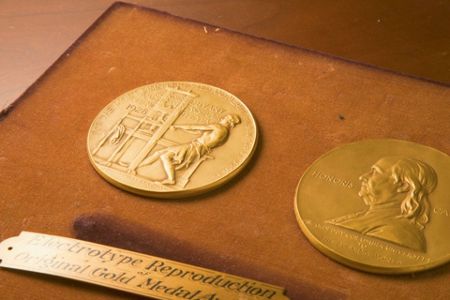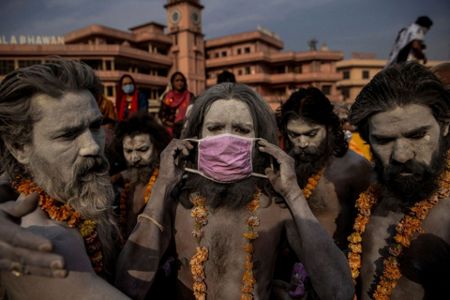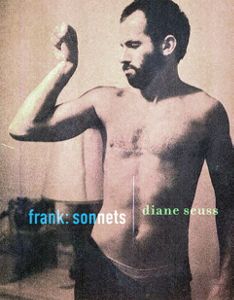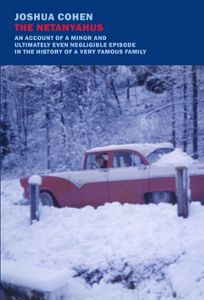NEW YORK (AP) — A Reuters photographer who was killed while covering fighting in Afghanistan was part of a team that took home the Pulitzer for feature photography.
Danish Siddiqui and his colleagues Adnan Abidi, Sanna Irshad Mattoo and Amit Dave won for images depicting the toll of the COVID-19 pandemic in India.
Their work, which was moved from the breaking photography category by the judges, “balanced intimacy and devastation, while offering viewers a heightened sense of place,” the committee wrote.
Siddiqui, 38, had been embedded with Afghan special forces in July and was killed as the commando unit battled for control of a crossing on the border between southern Afghanistan and Pakistan.
___
The Pulitzer Prizes announced its winners Monday from a tumultuous year that saw an insurrection, the frantic end of the United States’ longest war and fallout from the ongoing coronavirus pandemic and catastrophic climate change.
The awards featured 15 journalism and seven arts categories. Each winner received a prize of $15,000 except for the public service award — given to The Washington Post this year — which comes with a gold medal. The Pulitzer was first awarded in 1917 and is considered the most prestigious American journalism award.
___
The Pulitzer Board has awarded a special citation to Ukrainian journalists.
The board recognized those in their home country covering the ongoing crisis that began earlier this year for “their courage, endurance, and commitment to truthful reporting during Vladimir Putin’s ruthless invasion of their country and his propaganda war in Russia.”
The board said reporting has provided an accurate picture of the situation in the country and has done honor to both Ukraine and journalists everywhere.
___
The New York Times received the Pulitzer for national reporting for its work documenting how routine traffic stops ended in the deaths of hundreds of people, many of them Black.
The newspaper’s investigation found that during the previous five years, 400 unarmed drivers or passengers not under pursuit for a violent crime were killed by police.
The reporting found that just five officers were convicted of crimes in those killings, while governments paid at least $125 million to resolve civil actions such as wrongful-death lawsuits.
The Times reported that it reviewed video and audio recordings, prosecutor statements and court documents in finding patterns of questionable police conduct.
“It’s an example of data journalism so thorough that it turns long-held suspicions into fact,” the panel said.
___
Raven Chacon, a composer, performer and installation artist from the Navajo Nation, has won a Pulitzer Prize for music for his composition, “Voiceless Mass.”
Chacon’s work is currently on display at the Whitney Biennial, which is inspired by oil pipeline protestors at the Oceti Sakowin camp near the Standing Rock Indian Reservation in North Dakota.
His 2020 opera, “Sweet Land,” co-composed with Du Yun, was performed outdoors at the Los Angeles State Historic Park and earned critical praise for its revisionist telling of American history using different narratives simultaneously. The opera was awarded best opera by the Music Critics Association of North America for 2021.
Chacon has been mentoring hundreds of Native high school composers in the writing of string quartets through the Native American Composer Apprenticeship Project since 2004.
___
The Washington Post received the Pulitzer for public service for its extensive, interactive coverage of the Jan. 6, 2021 insurrection at the U.S. Capitol.
The Post’s reporting found numerous problems and failures in political systems and security before, during and after the insurrection. Among the most significant were that law enforcement officials did not respond with urgency to warnings about potential violence; President Donald Trump resisted calls from numerous advisers to urge the mob to disperse for three hours and officials in at least 17 states received hundreds of threats. Many of those threats were concentrated in states where Trump disputed election results.
The newspaper said its reporting of the lead-up to the attack, the riot itself and the aftermath was based on interviews with more than 230 people, thousands of pages of court documents and internal law enforcement reports and hundreds of videos, photographs and audio clips.
___
The Miami Herald received the breaking news Pulitzer for its coverage of the June 24, 2021, collapse of a 12-story oceanfront condominium tower in Surfside, Florida.
Ninety-eight people were killed in the early morning partial collapse at the Champlain Towers South, a disaster that prompted a massive search-and-rescue effort.
The Herald was cited by the Pulitzer panel for “urgent yet sweeping" coverage, which it said was done “merging clear and compassionate writing with comprehensive news and accountability reporting.
That reporting included details of rescue efforts and interviews with witnesses, survivors, family members and friends searching for loved ones at the scene. It also included the buildings history, repairs and the process it was undergoing for recertification under the building code.
“As a newsroom, we poured our hearts into the breaking news and the ongoing daily coverage, and subsequent investigative coverage, of the Champlain Towers South condominium collapse story,” Miami Herald Executive Editor Monica Richardson wrote in a statement. “It was our story to tell because the people and the families in Surfside who were impacted by this unthinkable tragedy are a part of our community.”
___
Joshua Cohen’s “The Netanyahus” has won the Pulitzer Prize for fiction.
The work is a comic and rigorous campus novel based on the true story of the father of former Israeli Prime Minister Benjamin Netanyahu seeking a job in academia.
The late artist Winfred Rembert won in biography for “Chasing Me to My Grave: An Artist’s Memoir of the Jim Crow South,” as told to Erin I. Kelly.
Andrea Elliott’s “Invisible Child: Poverty, Survival & Hope in an American City,” which builds upon her New York Times investigative series about a homeless Black girl from Brooklyn, received a Pulitzer for general nonfiction.
Two prizes were awarded Monday in history: Nicole Eustace’s “Covered with Night: A Story of Murder and Indigenous Justice in Early America” and Ada Ferrer’s “Cuba: An American History.”
Diane Seuss won in poetry for “frank: sonnets” and the music award Monday was given to Raven Chacon for his composition for organ and ensemble, “Voiceless Mass.”
James Ijames won the drama award for “Fat Ham.”
___
A collaboration between the Chicago Tribune and the Better Government Association on problems with fire safety regulations in the city received the Pulitzer for local reporting.
“Deadly Fires, Broken Promises” detailed city ordinances that are routinely ignored, such as one passed after a fire killed four children in 2014 that required fines on landlords who violate smoke detector regulations.
Cecilia Reyes of the Tribune and Madison Hopkins of the watchdog BGA found that fires killed 61 Chicagoans from 2014 through 2019 in buildings where the city had been warned about safety problems but failed to adequately address them.
The reporters found many of those fires occurred in low-income, minority neighborhoods.
___
The New York Times received the international reporting Pulitzer for a series of articles on U.S. airstrikes in Syria, Iraq and Afghanistan and patterns of targeting failures that led to civilian deaths.
The staff of the newspaper found flawed intelligence, faulty targeting, and very little accountability and challenged the official accounts of the strikes, including one that killed an aid worker and members of his family in Afghanistan.
The Times used U.S. public records law to obtain more than 1,300 credibility assessments from the Pentagon on drone strikes that took place between September 2014 and January 2018.
___
The Tampa Bay Times won the investigative reporting Pulitzer for its series of articles on the exposure of workers and nearby residents to dangerous levels of lead at a battery recycling plant.
The three-part series “Poisoned,” by Corey G. Johnson, Rebecca Woolington and Eli Murray, documented how hundreds of workers at Gopher Resource were put in harm’s way when they extracted lead from used car batteries, melted it down and turned it into blocks of metal to resell.
The reports detailed the company’s use of inadequate equipment and ventilation in a building where systems designed to capture chemicals were either turned off or dismantled entirely.
The newspaper also obtained records that documented a pattern of pollution dating back to the 1960s and showed the plant had pumped more lead into the air than any other factory in Florida over the last two decades. It also found that polluted water was discharged into the Palm River, excessive levels of chemicals were sent into Tampa’s sewer system, and hazardous waste was mishandled.
Prompted by the reporting, investigating county regulators found more than two dozen possible violations.
Copyright 2022 The Associated Press. All rights reserved. This material may not be published, broadcast, rewritten or redistributed without permission.













